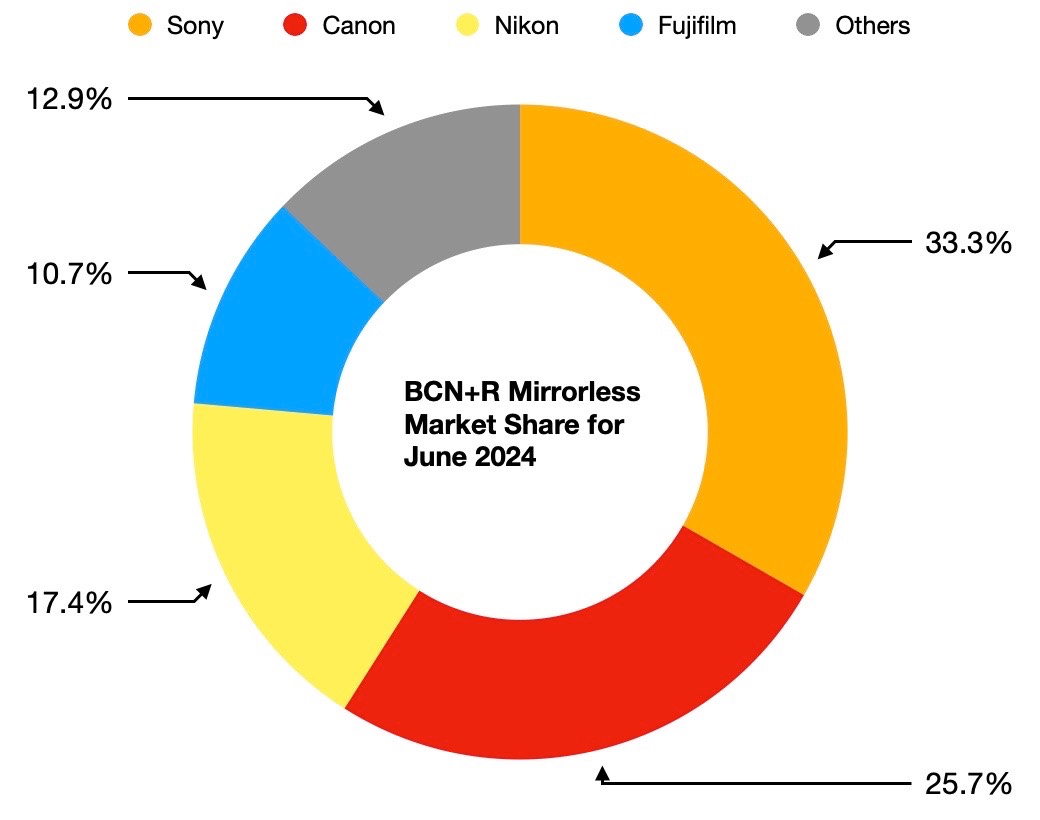BCN+R just published another of their carefully managed "slices" of information, which tend to get distorted by Internet sites. Here's the graph of this most recent bit of "news":

A bunch of caveats apply that you have to take into account before you make any conclusions about this data:
- Japan market only
- Not really camera shop data, more Big Box/Mom&Pop mix
- June 2024 data only
- Unspecified and unverifiable data (e.g. is this units or dollars?)
- BCN+R tends to promote what it wants to say ;~)
But the bigger problem with this particular data release is that last point. BCN+R used their press release to point out that this is the first time Fujifilm has been in the top four in 24 years (hey, news!). However, this is almost solely due to the fact that Fujifilm had the only new lower end product in June (X-T50). The top five products in June have also been (mostly) in the top five products all year long (ZV-E10, R10, R50, A6400, and Z30).
That product list should tell you something else, too. This relates to a discussion we've been having over on dpreview: Nikon's strategy is different than Canon's. It's not market share oriented, it's gross profit margin oriented. Despite their DX triplets, most of Nikon's success in the past two years has come with the full frame market, and towards the top end of that. This is producing higher profits on lower volume than Canon or Sony can claim.
The very first bullet, above, is also important to note. The central bank in Japan wanted inflation and now has produced it in spades. Wages haven't kept up (overall; they have in some global conglomerates). The overall Japanese gross domestic product has been shrinking, and Japan is now the fourth largest economy in the world, having slipped one spot to fall behind Germany. The relevance of Japanese market share to the global situation is getting disconnected in a meaningful way.
Which leads me to another point: when BCN+R puts out data to the public like this, they invariably don't tie it to historical data in a manner that would indicate real trends. For instance, what's the volume for those first six months of 2024 compared to 2023?
So take what you read about these "statistics" with a grain of salt. They often don't tell us anything useful.
